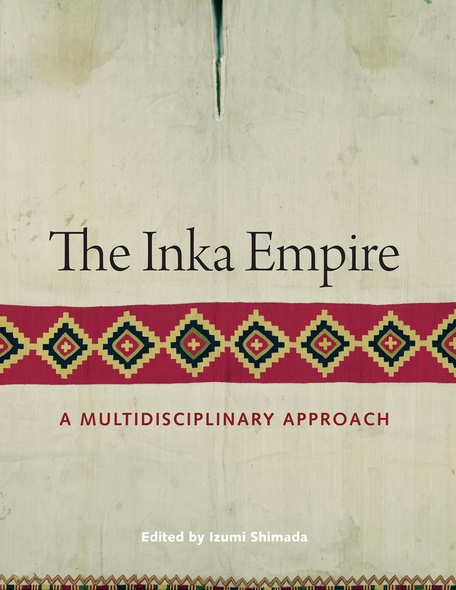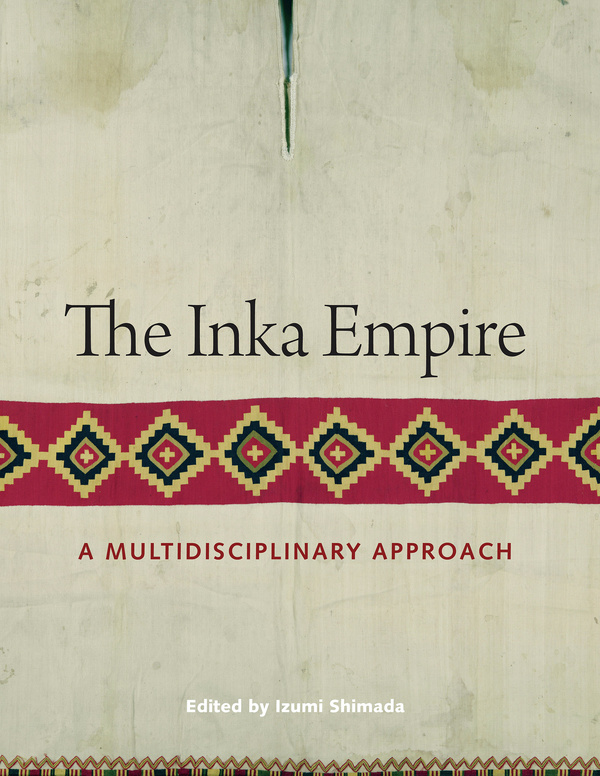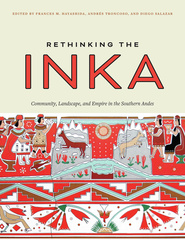Massive yet elegantly executed masonry architecture and andenes (agricultural terraces) set against majestic and seemingly boundless Andean landscapes, roads built in defiance of rugged terrains, and fine textiles with orderly geometric designs—all were created within the largest political system in the ancient New World, a system headed, paradoxically, by a single, small minority group without wheeled vehicles, markets, or a writing system, the Inka. For some 130 years (ca. A.D. 1400 to 1533), the Inka ruled over at least eighty-six ethnic groups in an empire that encompassed about 2 million square kilometers, from the northernmost region of the Ecuador–Colombia border to northwest Argentina.
The Inka Empire brings together leading international scholars from many complementary disciplines, including human genetics, linguistics, textile and architectural studies, ethnohistory, and archaeology, to present a state-of-the-art, holistic, and in-depth vision of the Inkas. The contributors provide the latest data and understandings of the political, demographic, and linguistic evolution of the Inkas, from the formative era prior to their political ascendancy to their post-conquest transformation. The scholars also offer an updated vision of the unity, diversity, and essence of the material, organizational, and symbolic-ideological features of the Inka Empire. As a whole, The Inka Empire demonstrates the necessity and value of a multidisciplinary approach that incorporates the insights of fields beyond archaeology and ethnohistory. And with essays by scholars from seven countries, it reflects the cosmopolitanism that has characterized Inka studies ever since its beginnings in the nineteenth century.
Shimada’s monumental volume makes clear that ‘Inka’ can be understood in multiple ways, whether as a claim to ethnic origin, an assertion of status, a mode of governance or as a standard of beauty...This volume will surely influence research on the Inkas for decades to come. Moreover, although the volume maintains a tight focus on its subject matter, it offers rich and varied insights into imperialism that will interest scholars of ancient empires more generally.
Shimada admirably accomplishes his objectives to [1) offer the latest data and interpretations regarding the rise of the Inka state; 2) present an updated overview of the material remains and the organizational and ideological features of the Inka state; 3) demonstrate the importance of multidisciplinary approaches to Inka studies; and 4) acquaint readers with important scholarship on the Inkas, including work usually not published in English.
This book is of major importance. It will be a classic for the next twenty years, challenging assumptions and pointing out new directions for productive research in all the disciplines included. In addition, it will be a graduate student’s guidebook, a refresher for specialists who may not have been keeping up with advances in other disciplines, and utterly fascinating for scholarly readers interested in prehistoric empires, American native cultures, or the benefits of well-integrated multidisciplinary research.
This edited volume not only provides a useful textbook for students but will act as an important benchmark and reference point for future research on the Inka Empire. It offers thoughtful summaries of the latest findings from archaeological, historical, anthropological, and linguistic approaches. It provides a broad overview of the Empire from its origins to the Colonial period, and from the heartland of Cuzco to the furtherest outreaches. Each chapter is written by recognized authorities who are well placed to summarize the work of others and who write insightfully about topics, regions, and time periods on which they have been conducting their own research.
List of Abbreviations
Chapter 1. Introduction (Izumi Shimada)
Part I. Written Sources, Origins, and Formations
Chapter 2. Inkas through Texts: The Primary Sources (Frank Salomon)
Chapter 3. The Languages of the Inkas (Rodolfo Cerrón-Palomino)
Chapter 4. Tracing the Origin of Inka People through Ancient DNA Analysis (Ken-ichi Shinoda)
Chapter 5. Separating the Wheat from the Chaff: Inka Myths, Inka Legends, and the Archaeological Evidence for State Development (Brian S. Bauer and Douglas K. Smit)
Part II. Imperial Infrastructures and Administrative Strategies
Chapter 6. Inka Imperial Intentions and Archaeological Realities in the Peruvian Highlands (R. Alan Covey)
Chapter 7. Funding the Inka Empire (Terence N. D'Altroy)
Part III. Inka Culture at the Center
Chapter 8. Inka Cosmology in Moray: Astronomy, Agriculture, and Pilgrimage (John C. Earls and Gabriela Cervantes)
Chapter 9. The State of Strings: Khipu Administration in the Inka Empire (Gary Urton)
Chapter 10. Inka Art (Thomas B. F. Cummins)
Chapter 11. Inka Textile Traditions and Their Colonial Counterparts (Elena Phipps)
Chapter 12. The Inka Built Environment (Stella Nair and Jean-Pierre Protzen)
Chapter 13. Considering Inka Royal Estates: Architecture, Economy, History (Susan A. Niles)
Chapter 14. Inka Conceptions of Life, Death, and Ancestor Worship (Peter Kaulicke)
Part IV. Imperial Administration in the Provinces
Chapter 15. Collasuyu of the Inka State (Martti Pärssinen)
Chapter 16. Reading the Material Record of Inka Rule: Style, Polity, and Empire on the North Coast of Peru (Frances M. Hayashida and Natalia Guzmán)
Chapter 17. Over the Mountains, Down into the Ceja de Selva: Inka Strategies and Impacts in the Chachapoya Region (Inge Schjellerup)
Chapter 18. At the End of Empire: Imperial Advances on the Northern Frontier (Tamara L. Bray)
Part V. Impacts of the Spanish Conquest
Chapter 19. Three Faces of the Inka: Changing Conceptions and Representations of the Inka during the Colonial Period (Tetsuya Amino)
Authors' Biographies
Index







